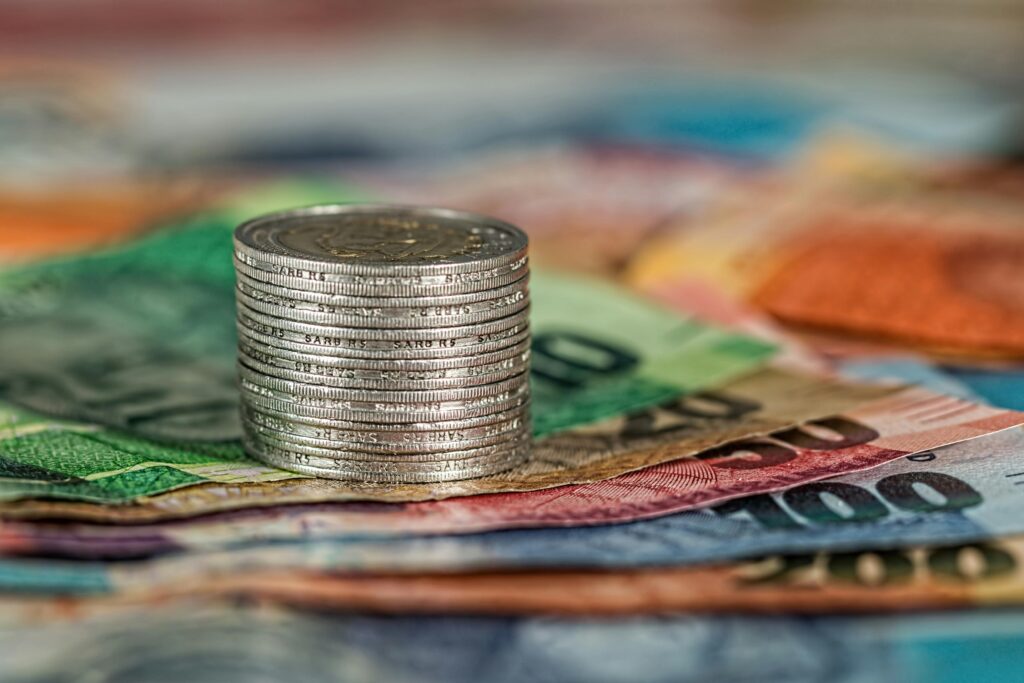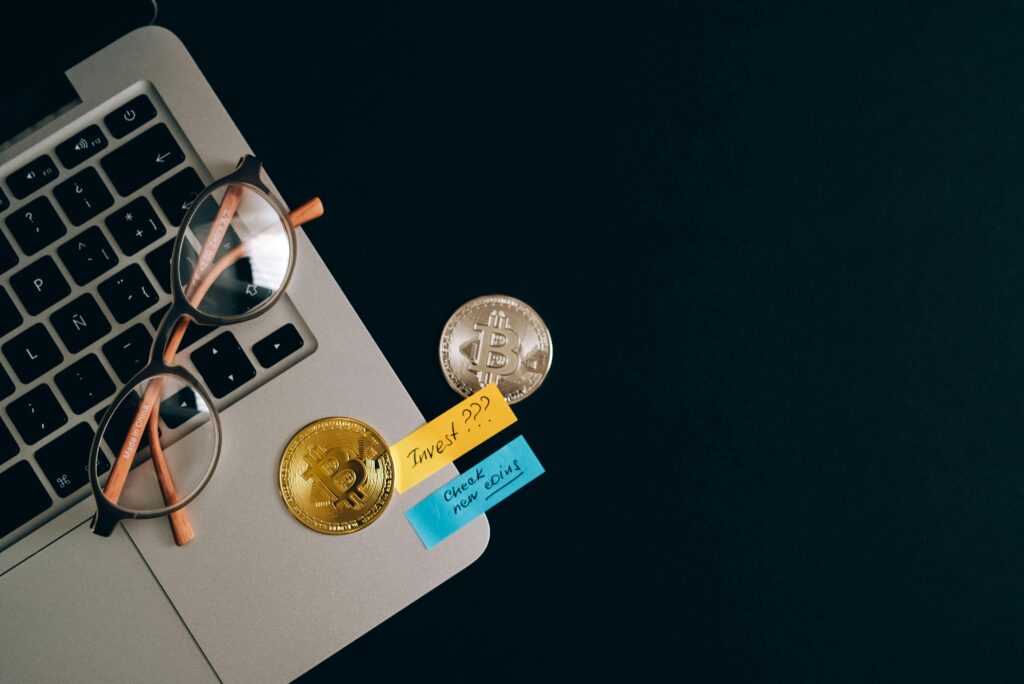In today’s fast-changing financial world, investing in physical assets has become a reliable strategy for building and preserving wealth. Unlike stocks or cryptocurrencies, physical assets like real estate, gold, and collectibles have intrinsic value and are less vulnerable to market volatility. These investments provide a tangible store of wealth, offering protection against inflation and economic downturns. Many investors turn to physical assets as a hedge against uncertainty, ensuring financial security for the long term.
Moreover, physical assets often appreciate over time and can generate passive income. Rental properties, farmland, or even rare collectibles can provide ongoing cash flow while increasing value. They offer diversification in an investment portfolio, reducing overall risk. Whether you’re a beginner looking for a stable investment or a seasoned investor seeking to expand your wealth, physical assets remain a strong and dependable choice.

Introduction: Why Invest in Physical Assets?
For almost all wealth creation, physical assets to invest in provide one reliable, time-tested way. Physical assets differ from stocks, cryptocurrencies, or other digital investments whose value may fluctuate tremendously, in that they have real, tangible value. They are regarded as a stable or inflation hedge, while they are still expected to usually appreciate. Be it real estate, precious metals, or collectibles, these types of assets assure the investor that fully digital investments may usually fail to do.
Investing in physical assets helps achieve decentralization. Instead of concentrating their assets on one kind of investment, investors can employ decentralization to minimize risk by spreading their fortunes over different asset classes. When stocks tumble, real estate may still rise, balancing investors’ accounts. Besides, physical assets can offer passive income—a rental property gives out monthly cash flow while farmland brings in agricultural profits. Gold can also be lent or sold for profit. Investing in physical assets is about more than just the preservation of wealth; it is also concerned with solid and steady capital appreciation.
List of Good Physical Investment Assets
It invests in physical assets that bring stability and safety, and income growth over the long term. Unlike electronic investments, physical ones have inherent values, and market fluctuations threaten them less. The best physical investments would be below:
1. Real Estate
- It is one of the most common and profitable types of physical assets.
- Residential, Commercial, Rental Properties.
- Generates passive income through rent and appreciates over time.
2. Precious Metals (Gold, Silver, Platinum)
- A hedge against inflation and economic downturns.
- Physical storage or investment via ETF.
- High liquidity and world demand.
3. Farmland and Agricultural Land
- Ensures a consistent income stream, either through crop production or leasing.
- Appreciated most of the time.
- The industry is in high demand and consistent.
4. Collectibles (including Art, Antiques, Rare Coins, Stamps)
- Unique, valuable assets that can appreciate over time.
- Demand in the market is a function of rarity and historical importance.
- Requires expertise and shrewdness to identify good items.
5. Commodities (Oil, Timber, Natural Resources)
- These are resources that are of necessity and will appreciate over time.
- Investment can be made either by direct ownership or through commodity funds.
- Prices are dependent on their demand, with a potential high return.
6. Luxury Objects (Watches, Jewelry, Classic Cars)
- Value is driven by the production constraint and brand reputation.
- Will the price rise over time, thus becoming a valuable investment?
- These are well-kept and preserved.
7. Physical Business (Brick and Mortar Store, Franchise)
- Produces Active and passive income.
- Value varies with the location, demand, and kind of business model.
- It can be sold in the future at a profit.
These are good ways for investing in diversified portfolios with good investment and financial security. The key is asset selection depending on personal financial goals, trends in the market, and risk tolerance.

Benefits of Investing in Physical Assets
Investments in physical assets come with a broad range of benefits that make them an appropriate asset class entry into any portfolio. Physical assets have real substance as opposed to being either digital assets or paper assets, providing safety and security. These are some of the key benefits of investing in physical assets:
1. Tangible Value and Security
- Physical assets exist in the real world; stocks or cryptocurrencies do not.
- Their intrinsic value limits the dangers of cyber threats or digital fraud hurting them.
- These assets can still be sold even during poor economic conditions.
2. Inflation-Proofing Assets
- Monetary inflation reduces the purchasing power of money, while physical assets tend to increase in value.
- Real estate, gold, or commodities have enjoyed rising value and demand in times of inflation.
- Preserves your wealth through time-contrary to payment in cash.
3. Added Diversification to the Investment Portfolio
- This further balances the investment with physical assets by reducing its risks.
- So you can think of various types of physical assets, all of which react differently to market changes.
- This also ensures that your diversified portfolio is well-acquainted with the riskiness of economic shocks.
4. Passive Income Generation
- Some physical businesses, such as a rental property or farmland, are an excellent recurring income source.
- Passive income is a great way for an investor to slowly grow their wealth generation after generation.
- Storage units, vending machines, and independent kiosks are some other equally great ventures.
5. Long-Term Upside Potential
- The majority of physical assets increase in value over time.
- Land, rare collectibles, and precious metals appreciate over the years.
- A great way to pass wealth on to the next generation.
6. Relative Stability in Value concerning Stocks and Cryptos
- Stock and cryptocurrency markets are extremely volatile.
- Physical assets are often well-positioned in stability by lowering the risk of extreme price fluctuations against adversities.
- Instills a sense of peace in the minds of those investors who are risk-averse.
7. Ownership Control and Flexibility
- Investors exercise full control over their physical assets.
- Whereas stocks allow companies to make decisions, owners of real estate may renovate, lease, or sell when needed.
- Gold, jewelry, and luxury goods are learned resources when funds are urgently required, either through sale or collateral.
Investing in physical assets goes a long way in smoothing the edges of wealth accumulation into the future and reducing risk. Whether they are real estate, commodities, or collectibles, physical assets offer a certain level of financial security, liquidity, and protection against unforeseen economic turbulence in the market.

Benefits of Investing in Physical Assets
Investing in physical assets offers many benefits that greatly increase any investment portfolio. Unlike anything digital or paper-based, physical assets have tangible value and provide long-term security. Below are some basic benefits of investing in physical assets:
1. Intrinsic Value
- Physical assets such as real estate, gold, and collectibles have value in themselves.
- They exist physically and are not merely pops in your screen; they remain real property with a sort of value.
2. Protection Against Inflation
- Physical assets such as gold and real estate will appreciate over time, while cash will lose value due to inflation.
- Commodities and land preserve wealth by increasing their value.
3. Diversification of Investment Portfolio
- It reduces risks to have a mixture of physical and digital investments.
- Real estate, precious metals, and commodities react differently from stocks and bond, bondsstt they can counterbalance any shifts in the market.
4. Passive Income Potential
- Many physical assets provide forms of passive income in the form of rental income from properties, farmland, and even vending machines.
- This means that income is generated for the holders even if they take no active role in the business.
5. Less Volatile
- Whereas stocks and cryptocurrencies could be highly volatile, physical assets may exhibit more stable behavior.
- Real estate and gold tend to resist disturbance by transient market forces.
6. Tangibility and Security
- Digital assets can be hacked, wiped out, or lost in a system failure, while physical assets cannot.
- Investors have direct control of their assets-whether land, gold, or art pieces.
7. Long-term Wealth Preservation
- Physical assets appreciate as years go by, presenting a good means of building generational wealth.
- Historical price trends show examples such as real estate and gold valuing consistently over the years.
8. Borrowing Against Physical Assets
- Physical assets can be used as collateral for all types of loans and mortgage funding.
- This allows the investor to use the capital while still being able to hold on to valuable investments.
Investing in physical assets spells financial security, stability, and long-term growth. Therefore, if you are looking for consistent income, longevity, and preservation of wealth, adding a physical asset strategy would be an ideal decision.

The Value of Investing in Physical Assets
When you want to consider adding investment in physical assets to the familiar, it should be remembered that there are clear tangible benefits of investing in physical assets. Unlike equities or digital investments, physical investments have intrinsic value, from which financial security and long-term wealth building are derived. Here are some key benefits of investing in physical assets:
1. Tangible Value and Stability
- The worth present in physical assets is inherent as opposed to digital or paper investments.
- These investments also provide safety, as they cannot just vanish overnight due to market crashes.
- Their value is also not so volatile in comparison with stocks and cryptocurrencies.
2. Hedge Against Inflation
- Thus, real estate, gold, and commodities usually appreciate over time; thus, they protect against inflation.
- With the increase in the cost of living, physical assets increase purchasing power since their average value appreciates.
3. Potential for Passive Income
- Passive income-generating assets include rental properties, farmland, and vending machines.
- These activities can help achieve financial goals without having to spend money and energy every day.
4. Portfolio Diversification
- Invest in a combination of physical and digital assets, as this will reduce the risk of financial exposure as a result.
- A sound portfolio guarantees stability during economic downturns.
5. Ownership and Control
- There are no company decisions that will affect your investment like physical assets give complete control.
- You may manage them as per your strategy involving selling or improving them.
6. Build Wealth Over Time
- Property, collectibles, and luxuries appreciate over time and may be passed down as wealth to future generations.
- Generational wealth can be secured, which helps secure their financial futures.
7. Lower Vulnerability to Cyber Risk
- Digital investments are prone to hacking and cyber fraud.
- In case they are properly stored and insured, they remain what they have always been: safe.
Investing in physical assets offers a strong foundation for future growth in finance, security, and independence. In real estate, precious metals, or collectibles, these assets will protect wealth in the future and offer stability in uncertain economic times.

Best Strategies for Managing and Protecting Your Assets
Investing in physical assets is a smart move, but proper management and protection are crucial to ensuring long-term value and financial security. Without the right strategies, your assets could lose value, face legal issues, or become vulnerable to theft or damage. Below are the best strategies to manage and protect your physical assets effectively.
1. Diversify Your Asset Portfolio
- Don’t rely on just one type of asset—spread your investments across different physical assets like real estate, gold, and collectibles.
- Diversification reduces overall financial risk and protects against market fluctuations.
2. Secure Proper Insurance Coverage
- Insure valuable assets like real estate, jewelry, and vehicles to protect them from unexpected losses.
- Consider specialized insurance for collectibles, artwork, and rare items.
3. Maintain Proper Documentation and Records
- Keep legal documents, purchase receipts, and ownership records in a secure location.
- Digital copies stored in cloud-based services can provide an extra layer of protection.
4. Protect Against Theft and Damage
- Use secure storage options like safes, security vaults, and safety deposit boxes.
- Invest in security systems, alarms, and surveillance cameras for high-value assets.
5. Monitor Market Trends and Adjust Strategies
- Stay informed about market changes that may affect asset value, such as property market shifts or gold price fluctuations.
- Adjust your investment strategy based on economic conditions and future projections.
6. Perform Regular Maintenance and Upkeep
- Physical assets like real estate, vehicles, and machinery require regular maintenance to retain their value.
- Neglecting upkeep can lead to depreciation and higher repair costs in the future.
7. Have a Legal Protection Plan
- Work with a lawyer to create legal structures such as trusts or LLCs to protect high-value assets.
- Ensure all assets comply with tax and regulatory laws to avoid legal complications.
8. Establish an Exit or Succession Plan
- Plan for how you will sell, transfer, or pass down assets to future generations.
- Having a clear strategy ensures your assets continue to provide financial security for years to come.
By implementing these strategies, you can safeguard your physical assets, maximize their value, and ensure long-term financial stability. Proper asset management and protection will give you peace of mind while allowing your wealth to grow.

Learn more ways to earn daily. Best Passive Income Business for Sale – Your Guide to Buying & Earning
FAQs
1. What are the various physical assets that can be invested in?
Some of the most famous physical assets for investment that are well-known and frequently used are:
- Real Estate: Residential, commercial, or rental properties.
- Precious Metals: gold, silver, and platinum.
- Collectibles: rare coins, vintage cars, artwork.
- Farmland & Agricultural Land: Land for farming or timber production.
- Commodities: such as oil, natural gas, and other essentials.
2. Is keeping physical assets better than making stocks or cryptocurrencies?
Physical assets provide values as alternates to immovability, less volatility than neither stocks nor cryptocurrencies, but they do come with some maintenance costs from security to commitment spanning years or decades. By this its best path will be to diverge by combining into a mixed investment portfolio some physical asset holdings.
3. How to protect my physical assets from theft or damage?
- Use secure storage options such as bank safety deposit boxes or high-security vaults.
- Insure high-value items like real estate, jewelry, and collectibles.
- Install and manage security systems, alarms, and surveillance cameras for property protection.
- Store ownership documents, legal documents, and receipts in a safe place.
4. Do physical assets appreciate over time?
Most physical assets appreciate over time. Appreciation depends on market demand, economic conditions, and maintenance, however.
- Real estate tends to appreciate, but it is affected by location and economic trends.
- Gold and silver keep their value well under inflation and during economic downturns.
- Collectibles and artwork may appreciate significantly in value if they become rarer.
5. How liquid are physical assets?
Compared to stocks and cash, physical assets are relatively less liquid in that they cannot be quickly turned into money. However:
- Gold and silver? No problem: sell at market prices now.
- Real estate? It’ll take time to unload for cash, but income is assured from rental properties.
- Collectibles and art? Gotta find the right buyer to get out at the high end.
6. What is the biggest risk of investing in physical assets?
Such risks include:
- Market fluctuations: Property and gold prices can rise and fall.
- High maintenance costs: Real estate and vehicles need upkeep.
- Theft or damage: Assets like jewelry and artwork need protection.
- Liquidity problems: Selling physical assets can take time.
7. How do I start investing in physical assets with a small budget?
- Buy a few silver or gold coins rather than whole bars.
- Consider fractional ownership in real estate through REITs.
- Buy cheap collectibles, such as vintage stamps or rare books.
- Invest in agriculture, farmland, or cattle crowdfunding-platform supported.
Final Thoughts: Are Physical Assets a Good Investment?
Investing in physical assets can be a smart and strategic move for anyone looking to build long-term wealth, diversify their portfolio, and protect their financial future. Unlike stocks or digital assets, physical investments offer tangible ownership, stability, and a hedge against inflation. Real estate, gold, silver, collectibles, and other physical assets have historically held their value and even appreciated over time, making them a reliable choice for wealth preservation.
However, like any investment, physical assets come with risks. Market fluctuations, storage costs, maintenance, and liquidity concerns must be considered before investing. The key to success lies in proper research, diversification, and secure management of assets. Whether you’re a beginner looking to start small with silver or a seasoned investor seeking high-value real estate, physical assets can play a crucial role in strengthening your financial foundation. By making informed decisions and staying updated on market trends, you can maximize the potential of physical asset investments for a secure and prosperous future.




Pingback: How to Invest in an Apartment Building: A Step-by-Step Guide - Finvise Pro